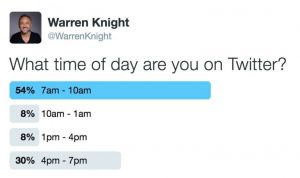Learn what drives customer satisfaction, how to measure it and ways to boost your company’s long-term profitability.

Ah, customer satisfaction — the soft metric that bites hard, especially in B2B, where we are not blessed with oceans of prospects and customers. Long-term B2B success is inextricable from the human relationship. You might treat customer satisfaction as soft, but your customers do not.
Each and every customer is more important to the bottom line, especially as a B2B company moves along the arc of maturity and increasingly focuses on profitability.
The mantra for long-term success is happier customers stay longer and buy more. Longevity varies directly with customer satisfaction. All other indicators aside, customer sat is the pulse of the relationship, of your current and future profitability,
What’s driving these customers? What makes them happy or sad? What is it that they want from us anyway?
The drivers of customer satisfaction
SaaSletter’s research on Drivers of Customer Satisfaction + Category Leadership surveyed 4,222 software companies. After 50 regression analyses, they found six key factors have a meaningful correlation with net promoter score results, revealing what customers value most. The factors are, in order:
- Quality of support.
- Meets requirements.
- Ease of doing business.
- Ease of use.
- Ease of set up.
- Product direction.
I would add to their list:
- Price/value.
I would argue these are table stakes. The report also points out that older companies have a harder time with these factors, largely from having more iterations or releases of their product or platform. Large companies may lack the agility to easily “turn the container ship” to address emerging or embedded customer service concerns.
Nothing is surprising here, but it’s interesting and accurate that these factors are strongly influenced by perception, emotion and personality. In other words, customer satisfaction heavily depends on the people involved.
As a company matures, profitability matters most. Customer satisfaction is the tide that lifts all boats — or not. It’s no wonder that many service organizations have built entire playbooks around serving core audiences.
It’s all about making your customers successful, personally and professionally, and seeing great value in your contribution to that success.
Ideal customer, who?
There is one powerful variable in all of this. Who are we satisfying?
Increasing customer satisfaction makes sense, especially when the customers fit the profile of your best ones. You may have heard of ICP, the definition of which, in practice, varies from “immediately converting prospects” to “ideal customer profile.” In between, it might be “insane clown posse.”
The arc of a company’s maturation begins with the urgent need to get paying customers in the door. Further along this arc, the focus turns from new money to old, from top line to bottom and from revenue to profitability.
Back to the arc. Customers come and go. We want to understand those who stay the longest and buy the most. Developing a profile of these good folks, not just of the companies’ firmographics but of the humans who participate, is fodder for marketing and sales. Let’s go get more of them.
Prospecting according to your ICP may increase acquisition costs and lengthen the sales cycle, but it pays off in long-term profitability.
Measuring customer satisfaction
There are four methodologies to determine customer satisfaction that matter, all of which are survey-based:
- Net promoter score (NPS)
- Customer satisfaction score (CSAT)
- Customer effort score (CES)
- Product-market fit (PMF)
All utilize Likert scale questions that are easy to understand and implement and provide quantifiable data. Respondents are asked to indicate their attitude, opinion or behavior according to a predetermined range or rating scale where the lowest number indicates disagreement and the highest agreement.
Net promoter score
I’ll focus on NPS and how it has become a powerful tool to understand customer expectations and what we need to do to maintain and boost their respect, involvement and business.
NPS is based on the question, “Would you refer Company A?” The premise is that a referral carries a personal endorsement. Therefore, the customer must be quite satisfied to agree to a referral.
Customers are asked to respond on a scale of 1 to 10, with 1 being the lowest and 10 the highest. Responses are categorized as follows:
- 9 – 10 are “promoters.”
- 7 – 8 are “passives.”
- 0 – 6 are “detractors.”
The NPS methodology is best applied to longer-term planning, which is enormously useful. However, when paired with qualitative research, we get the opportunity to ask, “Why?” and probe their experience and views for each of the factors driving customer satisfaction and a lot more. You get perception, emotion, and personality.
This combination of disciplines provides a longer-term, holistic view of customer satisfaction and loyalty and the specific steps to remedy underperformance.
‘This would be a great business if it weren’t for all these annoying customers’
How do you take control of customer satisfaction? You don’t. You ride alongside. Here are a few top-down ideas that may help. (Because nothing happens from the bottom up.)
- First, common sense. If your customers succeed, they’ll stick around, if you solve more of their problems, they’ll buy more. You should measure your success by their metrics and base incentives on achieving their goals.
- Second, get personally involved. Spend a day as a CX rep — handle calls, answer messages, attend meetings and resolve issues. Immerse yourself in your daily work.
- Lastly, visit them in person. Take a walk, drive or fly to see them. Be there, share a meal and connect face-to-face.
When Lou Gerstner took over as CEO of IBM, he was AWOL from HQ for the first few weeks. Where’s Lou? He was out seeing customers. Be like Lou.
Form personal relationships. Let them explain their company, values and aspirations to you face to face. What do they need? How can you help? Become part of their team.
What does customer satisfaction, as a key to long-term profitability, look like?
I was interviewing the C-suite decision maker of one of the sponsoring company’s best customers. I asked him, “What is the most important benefit you receive as a customer?”
His answer was short and direct, “Our salesman. He’s part of our team and helps us to solve problems. He knows what we need and goes out and gets it.” Be that salesman.
The post How customer satisfaction fuels B2B profitability appeared first on MarTech.
(5)






